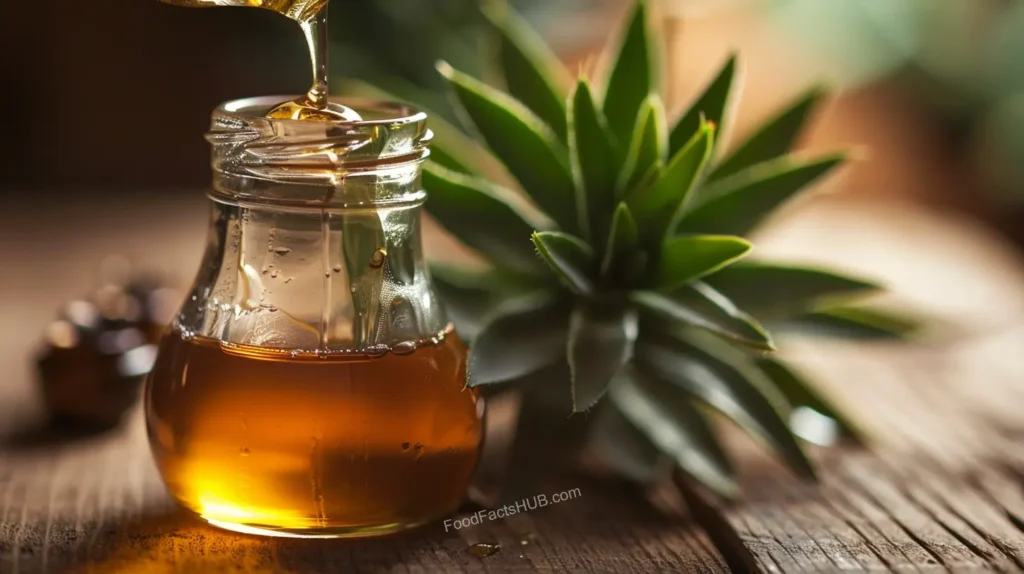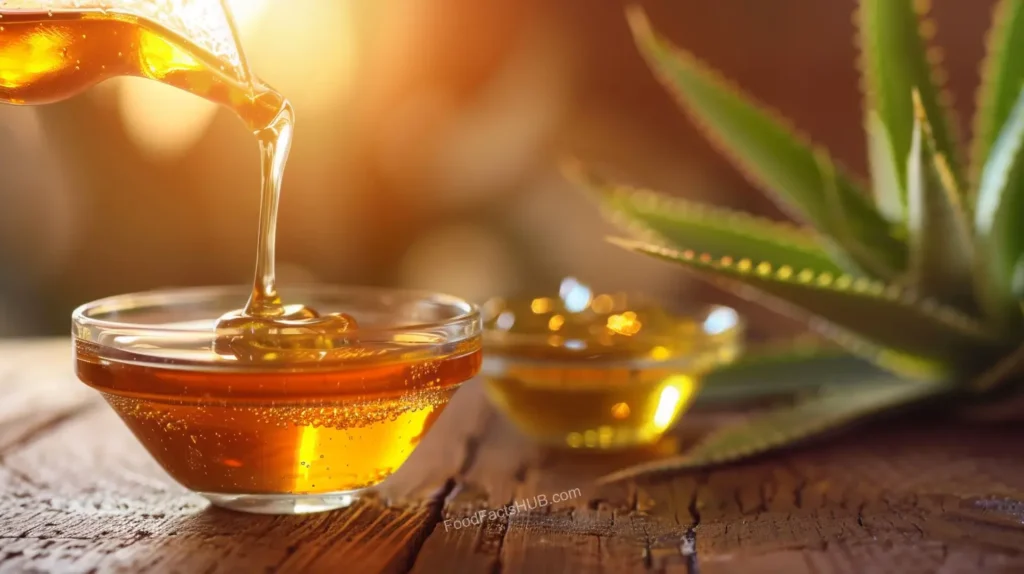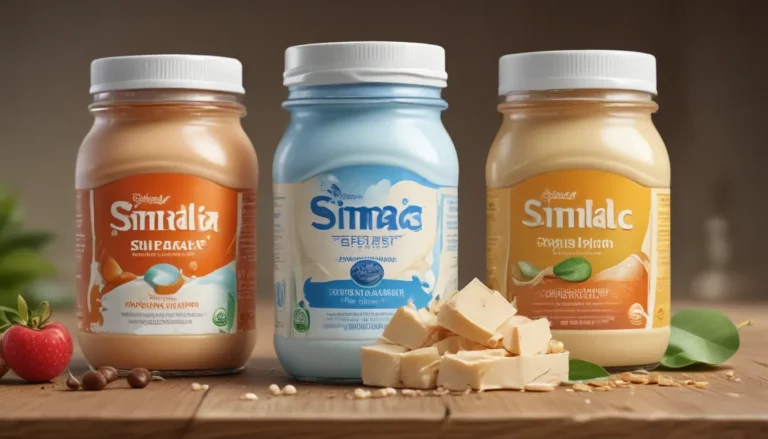The pictures in our articles might not always show exactly what the text is talking about. We use these images to make the article more interesting and eye-catching. They are there to add to the text, but not to replace it or show every detail.
The Golden Nectar: Exploring the World of Agave Syrup
Are you on the hunt for a natural sweetener that can add a unique touch to your culinary creations? Look no further than agave syrup, the golden nectar derived from the agave plant. This versatile sweetener has been gaining popularity in recent years, not only for its distinct flavor profile but also for its potential health benefits. In this comprehensive guide, we'll delve deep into the world of agave syrup, uncovering fascinating facts that will transform your understanding of this natural sweetener.
From its origins in the sun-drenched fields of Mexico to its place on health food store shelves worldwide, agave syrup has a rich history and a complex composition that sets it apart from other sweeteners. Whether you're a health-conscious individual looking for alternatives to refined sugar or a curious foodie eager to expand your palate, this article will provide you with all the essential facts about agave syrup. Get ready to explore the sweet science, culinary applications, and health implications of this intriguing natural sweetener.
The Origins and Production of Agave Syrup

What Exactly Is Agave Syrup?
Agave syrup, also known as agave nectar, is a natural sweetener derived from the agave plant, primarily the Agave tequilana species. This plant, native to Mexico, is perhaps best known for its role in tequila production. However, its sweet sap has found a new purpose as a popular alternative to traditional sweeteners.
Composition of Agave Syrup
| Component | Percentage |
|---|---|
| Fructose | ~80% |
| Glucose | ~20% |
| Water | Small amount |
| Other carbohydrates | Trace |
| Fat | Trace |
| Polyols | Trace |
| Vitamins and minerals | Trace |
As we can see from the table above, agave syrup is primarily composed of fructose and glucose, with small amounts of other components. This unique composition contributes to its sweetness and low glycemic index.
The Journey from Plant to Bottle: Production Process
The production of agave syrup is a fascinating process that combines traditional methods with modern technology. Here's a step-by-step breakdown of how this golden nectar is made:
This process results in a sweetener that's about 1.5 times sweeter than regular sugar, allowing for less use while maintaining desired sweetness levels in recipes.
Health Implications: Facts About Agave Syrup’s Impact on Wellbeing

The Glycemic Index Advantage
One of the most touted benefits of agave syrup is its low glycemic index (GI). But what does this mean for your health?
Understanding Glycemic Index
The glycemic index is a measure of how quickly a food can raise blood sugar levels. Foods with a high GI cause rapid spikes in blood sugar, while those with a low GI result in more gradual changes.
Agave Syrup’s GI Profile
Agave syrup has a remarkably low GI compared to many other sweeteners. This property makes it an attractive option for people looking to manage their blood sugar levels, including those with diabetes. However, it's crucial to note that while the GI is low, agave syrup is still high in calories and sugar content.
Nutritional Profile: More Than Just Sweetness
While agave syrup is primarily used as a sweetener, it does contain small amounts of nutrients that contribute to its overall health profile.
Nutrient Content per Tablespoon of Light Agave Syrup
- Calories: 60
- Carbohydrates: 16g
- Fat: 0g
- Cholesterol: 0g
- Sodium: 0g
- Vitamins: Small amounts of riboflavin, pyridoxine, folate, and vitamin K
These trace amounts of vitamins, particularly B vitamins like B6, may offer some benefits in protein and carbohydrate metabolism. Additionally, vitamin K and folate could potentially contribute to mental health benefits.
Potential Health Risks: The Other Side of the Coin
While agave syrup has some appealing properties, it's important to consider potential health risks associated with its consumption:
Culinary Applications: Unleashing the Potential of Agave Syrup

Versatility in the Kitchen
Agave syrup's unique flavor profile and liquid consistency make it a versatile ingredient in various culinary applications. Here are some popular uses:
Flavor Profile: A Unique Sweetness
Agave syrup is often described as having a honey-like taste with subtle notes of caramel and vanilla. This distinct flavor can add depth to dishes and drinks, making it a favorite among chefs and mixologists.
Conversion Chart: Replacing Sugar with Agave Syrup
When substituting agave syrup for sugar in recipes, use this handy conversion chart:
| Sugar Amount | Agave Syrup Equivalent | Liquid Reduction |
|---|---|---|
| 1 cup | 2/3 cup | 1/4 cup |
| 3/4 cup | 1/2 cup | 3 tablespoons |
| 1/2 cup | 1/3 cup | 2 tablespoons |
| 1/4 cup | 3 tablespoons | 1 tablespoon |
Remember to reduce other liquids in the recipe to account for agave syrup's moisture content.
Environmental and Ethical Considerations
Sustainability of Agave Production
The production of agave syrup has both positive and negative environmental impacts:
Pros:
- Agave plants require less water than many other crops
- They can grow in semi-arid conditions, reducing strain on water resources
- Agave cultivation can help prevent soil erosion
Cons:
- Monoculture farming of agave can lead to soil depletion
- Increased demand may lead to unsustainable harvesting practices
Vegan-Friendly Sweetener
One of the key facts about agave syrup that appeals to many consumers is its vegan-friendly status. Unlike honey, which is produced by bees, agave syrup is entirely plant-based, making it suitable for those following a vegan lifestyle.
Comparing Agave Syrup to Other Sweeteners
To truly understand the unique properties of agave syrup, it's helpful to compare it to other common sweeteners:
| Sweetener | Glycemic Index | Fructose Content | Calories per Tablespoon |
|---|---|---|---|
| Agave Syrup | 15-30 | ~80% | 60 |
| Table Sugar | 65 | 50% | 48 |
| Honey | 58 | 40% | 64 |
| Maple Syrup | 54 | 1% | 52 |
| High Fructose Corn Syrup | 87 | 55% | 53 |
This comparison highlights agave syrup's low glycemic index and high fructose content, two key factors that set it apart from other sweeteners.
Practical Tips for Using Agave Syrup
Storage and Shelf Life
One of the convenient facts about agave syrup is its long shelf life. Here are some tips for proper storage:
- Store in a cool, dark place
- No refrigeration required
- Can last for up to two years when stored properly
- Look for changes in color or smell as signs of spoilage
Choosing the Right Type of Agave Syrup
Agave syrup comes in different varieties, each with its own characteristics:
Choose the type that best suits your culinary needs and flavor preferences.
Conclusion: Balancing the Sweet Facts About Agave Syrup
As we've explored in this comprehensive guide, agave syrup is a complex sweetener with both advantages and drawbacks. Its low glycemic index, unique flavor profile, and versatility in cooking make it an attractive alternative to traditional sweeteners. However, its high fructose content and calorie density mean it should be consumed in moderation.
Understanding these facts about agave syrup empowers you to make informed decisions about incorporating it into your diet. Whether you're looking to manage blood sugar levels, explore new flavors in your cooking, or find a vegan-friendly sweetener, agave syrup offers interesting possibilities. As with any dietary choice, balance and moderation are key.
Remember, while agave syrup can be a valuable addition to a diverse and healthy diet, it's not a miracle food. It's always best to consult with a healthcare professional or nutritionist when making significant changes to your diet, especially if you have specific health concerns or conditions.
By arming yourself with knowledge about agave syrup's composition, production, health effects, and culinary uses, you're now equipped to sweetens your life responsibly and deliciously. So go ahead, experiment with this golden nectar in your kitchen, and discover the sweet potential of agave syrup for yourself!






